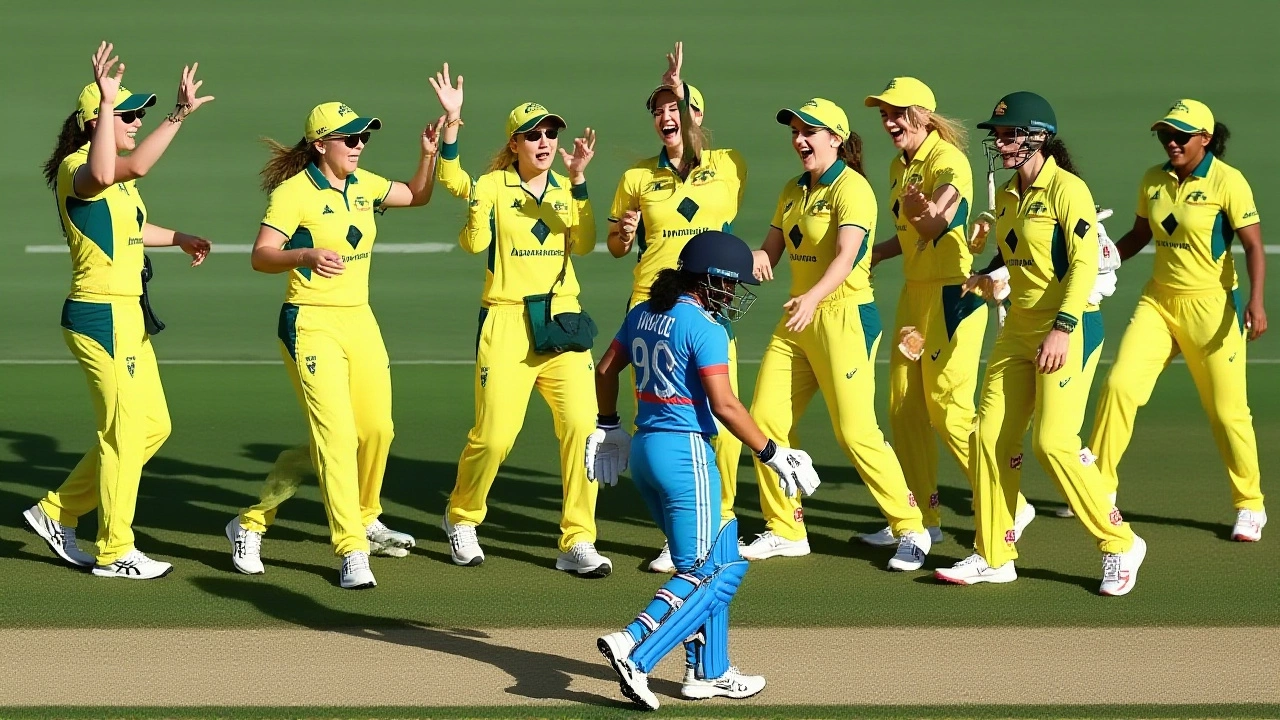Women’s ODI – What It Is and Why It Matters
When talking about Women’s ODI, a One Day International match played by women’s national teams, usually 50 overs per side. Also known as women’s one‑day international, it blends skill, strategy, and stamina in a single day of cricket. This format shapes the global calendar and drives fan interest across continents.
Another core entity is Cricket, the bat‑and‑ball sport governed by the International Cricket Council (ICC). Cricket creates the stage for ODIs, T20s, and Test matches. Within cricket, One Day International, a limited‑overs format where each team faces a maximum of 50 overs defines the rules and timing that Women’s ODI follows. The relationship is clear: Women’s ODI is a subset of One Day International, which belongs to the broader sport of Cricket.
Key Players, Boards, and Scheduling Dynamics
The success of a Women’s ODI depends on coordination between national cricket boards like BCCI, the Board of Control for Cricket in India and the ICC. These bodies manage match scheduling, decide venues, and ensure that player rankings reflect recent performances. For example, the postponed India‑Bangladesh white‑ball tour originally set for 2025 illustrates how international calendar clashes and security concerns can delay both men’s and women’s series. When a tour is shifted, the Women's ODI schedule often adjusts to avoid overlap and give players adequate preparation time.
Another related entity is Match Scheduling, the process of arranging dates, venues, and broadcast windows for international fixtures. Efficient scheduling enables Women's ODIs to attract sponsors, secure TV rights, and draw crowds. Without proper planning, teams may face back‑to‑back series, leading to fatigue and lower performance levels. This is why boards invest in long‑term calendars that balance men’s and women’s events.
Player rankings, overseen by the ICC, form another essential entity. Rankings reflect recent results from ODIs, Tests, and T20s, influencing team selection and fan expectations. A strong ranking can boost a team’s confidence heading into a major Women’s ODI tournament, while a dip may trigger changes in coaching staff or training focus.
Beyond the cricket world, the digital age brings tools like Data Visualization, software that turns match statistics into easily digestible charts and dashboards. Analysts use platforms such as Google Data Studio to track run rates, wicket counts, and player efficiencies in real time. These insights help coaches make tactical decisions during a Women’s ODI and give fans deeper engagement with the game.
Even non‑sport topics can intersect with Women’s ODI coverage. Media outlets often explore broader cultural themes, like how Indian festivals impact viewership numbers or how technology trends (think new smartphone releases) affect live‑streaming quality. While these may seem unrelated, they demonstrate the wide‑reaching influence of a single sport format on business, entertainment, and society.
In short, understanding Women’s ODI means recognizing its place within Cricket, its reliance on One Day International rules, and the crucial role of scheduling, rankings, and data tools. Below you’ll find a curated set of articles that dive into specific matches, tour changes, tech releases, and cultural moments—all of which shape the environment in which Women’s ODIs thrive.
Ready to explore the full collection? Scroll down to discover detailed stories on tour postponements, festival celebrations, tech launches, and more that together paint a complete picture of how Women’s ODI fits into today’s fast‑moving world.
Australia Women Edge India in 3rd ODI; Mandhana’s Record Century Fails
Australia Women clinched a 43‑run series win in New Delhi as Smriti Mandhana's record‑breaking 125 fell short, highlighting Australia's batting firepower and India's chase challenges.






